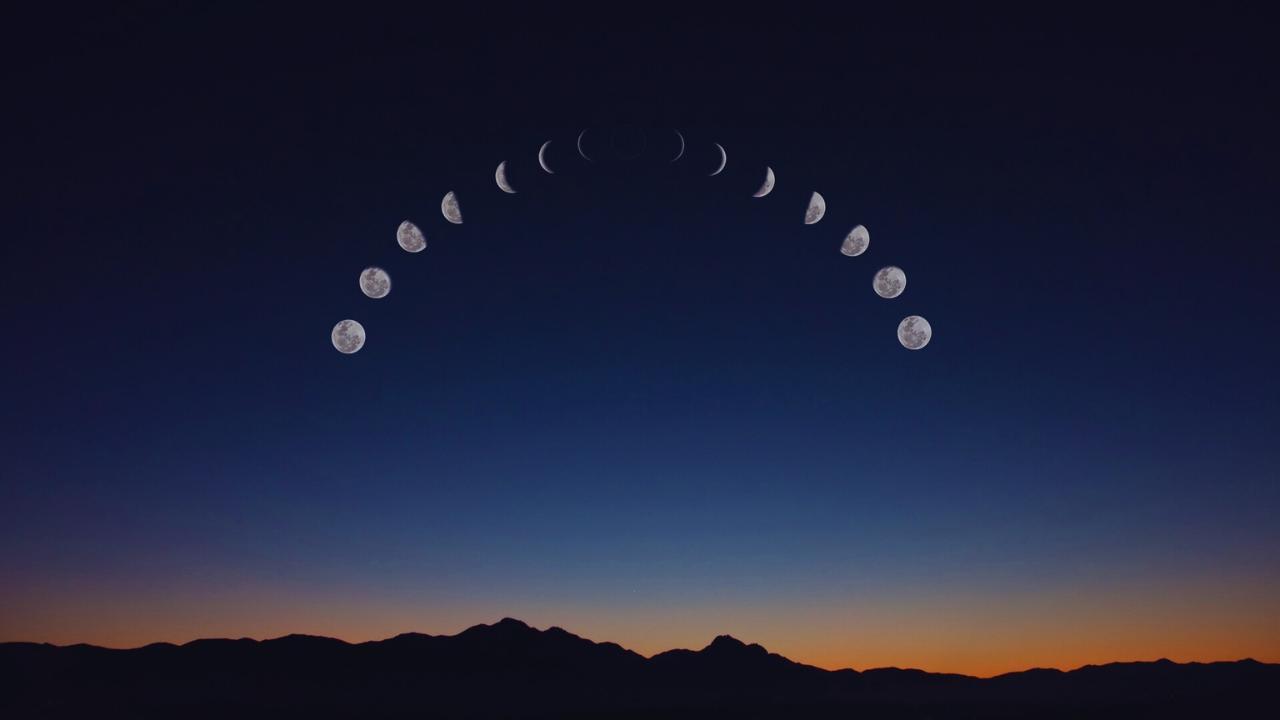
Join 10k+ people to get notified about new posts, news and tips.
Do not worry we don't spam!

Post by : Anish
In a universe filled with mysteries, the discovery of something as small as a 10-kilometer-wide moon might seem insignificant compared to monumental cosmic events. Yet, this recent revelation from Uranus has sent ripples through the scientific community, sparking renewed interest in planetary science and fueling curiosity about the distant corners of our solar system. Scientists have confirmed that Uranus, the seventh planet from the Sun, now boasts a newly discovered natural satellite—tiny by astronomical standards, yet rich in significance. This breakthrough is not just another addition to the moon count; it’s a gateway to understanding the history, structure, and dynamics of a planet that remains one of the most enigmatic in our celestial neighborhood.
Uranus has long puzzled astronomers. Known for its pale blue-green color and unique sideways tilt, the ice giant has more secrets than answers. Unlike the more studied Jupiter or Saturn, Uranus has been visited by only one spacecraft—NASA’s Voyager 2—in 1986. That brief encounter offered tantalizing glimpses of its faint ring system and a handful of moons, but it left a long list of questions unanswered. For decades, Uranus remained largely in the background of planetary research, overshadowed by missions to Mars or studies of Saturn’s dazzling rings.
The discovery of this tiny moon reignites interest in Uranus and highlights the limitations of our knowledge. How many more moons remain undiscovered in the dark reaches of its gravitational influence? Could these small bodies hold clues to the planet’s turbulent past? Every new object in orbit around Uranus serves as a fragment of a much larger puzzle, one that scientists are eager to piece together.
Detecting a moon only 10 kilometers across, orbiting a planet nearly three billion kilometers from Earth, is no small feat. The discovery was made possible through a combination of advanced telescope technology and enhanced image-processing techniques. Astronomers used high-resolution images from some of the world’s largest ground-based observatories, aided by adaptive optics to counteract Earth’s atmospheric distortions. A series of faint, consistent blips near Uranus hinted at the presence of a previously unknown object. After months of careful observation to rule out background stars and orbital debris, scientists confirmed that these blips were indeed a moon, now unofficially nicknamed “Uranus LI” in keeping with the naming convention.
At roughly 10 kilometers in diameter, this moon is tiny compared to Uranus’ larger satellites like Titania and Oberon, which span over 1,500 kilometers each. However, its size is part of what makes it so fascinating. Objects this small are difficult to detect, which means there could be many more lurking in Uranus’ orbit, unseen by even our most powerful telescopes.
Preliminary data suggests that the moon follows an irregular, distant orbit, likely placing it among the planet’s outer irregular satellites. These moons are often thought to be captured objects—asteroids or Kuiper Belt remnants snagged by the planet’s gravity billions of years ago. If this theory holds, studying the composition of this tiny moon could offer a window into the early solar system, preserving materials that have remained largely unchanged for eons.
The origin of Uranus’ unusual tilt—approximately 98 degrees, causing it to roll on its side as it orbits the Sun—has long been debated. Most theories suggest a colossal collision with an Earth-sized body during the solar system’s formative years. Such a cataclysm would have shattered any original moons and scattered debris across the system. The current moons and rings of Uranus may be remnants of that violent event, slowly coalescing over billions of years.
The discovery of a small irregular moon supports this narrative. Its likely capture or survival in a chaotic early environment hints at a dynamic history filled with gravitational encounters, collisions, and migrations. Each newly discovered satellite serves as a geological and chemical time capsule, holding clues about the forces that shaped not just Uranus, but the entire outer solar system.
Uranus has been climbing the list of priorities for space exploration agencies. NASA and ESA have both considered missions to the ice giants—Uranus and Neptune—for the 2030s and 2040s. This discovery strengthens the case for such missions. A dedicated orbiter could map Uranus’ moons in detail, analyze their composition, and study their interactions with the planet’s magnetosphere and faint ring system.
The scientific payoff could be enormous. Studying Uranus’ moons might reveal whether subsurface oceans exist on some of its larger satellites, as is suspected on moons of Jupiter and Saturn. These oceans could, in theory, harbor the conditions necessary for life. Even if this tiny new moon is too small for such possibilities, understanding its surface and composition can provide a baseline for comparison with its larger siblings.
Finding a moon of this size at such a distance is a triumph of modern astronomy. It underscores the power of next-generation telescopes and sophisticated image-processing algorithms. Observatories like the Subaru Telescope in Hawaii, the European Southern Observatory’s Very Large Telescope in Chile, and upcoming instruments like the Vera C. Rubin Observatory are making such discoveries increasingly possible. Future advances, particularly space-based telescopes operating beyond Earth’s atmospheric interference, promise an even clearer view of distant worlds.
This progress reflects a broader trend: the democratization of space discovery. Amateur astronomers equipped with high-quality consumer telescopes and access to open data have begun to contribute to these efforts. Collaborative projects between professionals and enthusiasts are accelerating discoveries, making planetary science more inclusive than ever before.
Space discoveries, no matter how small, capture the public imagination. The idea that a tiny moon has been hiding in plain sight around Uranus for billions of years sparks a sense of wonder and humility. Social media buzzed with excitement after the announcement, with space enthusiasts proposing whimsical names and artists creating imaginative depictions of the moon’s frozen surface. In an era dominated by technological and geopolitical headlines, such discoveries remind us of the boundless mysteries that still await beyond our planet.
Despite the excitement, many challenges remain. For now, this new moon is little more than a faint dot in a telescope’s field of view. Its composition, surface features, and precise orbital dynamics remain unknown. These questions will likely remain unanswered until a spacecraft visits Uranus, which could still be decades away. Until then, astronomers will continue to refine their observations, using every available tool to unlock as many secrets as possible from afar.
This discovery is part of a broader pattern: the outer solar system is far more complex and populated than once thought. Just as Saturn surprised scientists with its hundreds of tiny moons, Uranus may also host a bustling entourage of small satellites. Neptune, too, is likely hiding similar secrets. As technology advances and exploration missions venture farther, we can expect a steady stream of revelations—each one deepening our understanding of how planets and their moons evolve over time.
It’s easy to dismiss a 10-kilometer-wide moon as trivial in a solar system filled with giants. But in science, details often hold the key to big answers. These small moons are like cosmic breadcrumbs, leading researchers toward a more complete picture of planetary formation and evolution. Each new discovery adds a piece to a puzzle that spans billions of years and billions of kilometers.
At a time when humanity faces immense challenges on Earth—from climate change to resource scarcity—these discoveries remind us of something profound: our story is part of a much larger cosmic narrative. Looking outward helps us appreciate the fragility and uniqueness of our planet, while fueling the imagination that drives innovation and progress.
The discovery of a 10-kilometer-wide moon orbiting Uranus is far more than a minor astronomical footnote. It is a testament to human curiosity, technological ingenuity, and the relentless pursuit of knowledge. This tiny world, spinning silently in the cold darkness nearly three billion kilometers away, holds lessons about the birth of planets, the nature of our solar system, and perhaps even the potential for life in places we’ve yet to explore. It’s a small discovery, yes—but in the vast expanse of the universe, every small step brings us closer to the answers we seek.
The information presented in this article is based on currently available astronomical research, public data, and expert analysis. While every effort has been made to ensure accuracy, future observations or discoveries may update or change the understanding of Uranus and its moons. This content is intended for informational and educational purposes only and should not be considered as official scientific confirmation beyond what has been publicly reported by recognized institutions.
Uranus Discovery, Space Exploration










Jaismine Lamboria Wins World Boxing Gold for India
India’s Jaismine Lamboria claimed World Boxing gold, while Nupur Sheoran earned silver and Pooja Ran

Sri Lanka beat Bangladesh by 6 wickets in Asia Cup 2025 opener
Sri Lanka started their Asia Cup 2025 campaign with a six-wicket win over Bangladesh, powered by Nis

PM Modi Lays ₹6,300 Crore Projects in Assam Criticizes Congress
PM Modi accuses Congress of backing infiltrators, lays ₹6,300 crore health and infrastructure projec

Sushila Karki Becomes Nepal’s First Woman Prime Minister
Eminent jurist Sushila Karki, 73, becomes Nepal’s first woman prime minister after Gen Z protests to

Netanyahu gambled by targeting Hamas leaders in Qatar. It appears to have backfired
Netanyahu’s airstrike on Hamas leaders in Qatar failed, hurting global ties, angering allies, and ra

Esha Singh Wins Gold in 10m Air Pistol at ISSF World Cup 2025 India Shines
Esha Singh secures India’s first gold at ISSF World Cup 2025 in Ningbo, beating top shooters in a th